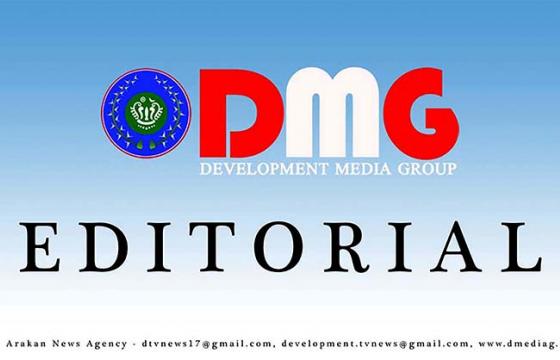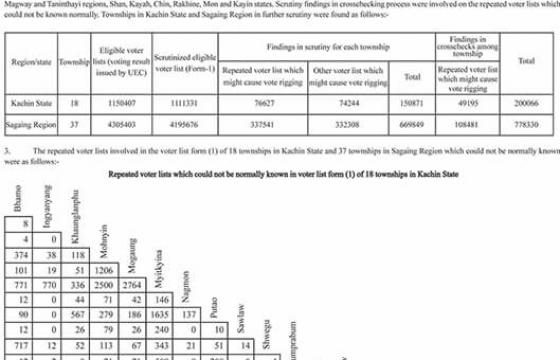The clash of political interests itself is now part of politics in the modern era. Constitutional legitimacy, processes of governance, and claims to power by force have been in conflict during the reform process in Myanmar, at least over the past six years as they are on display to the world. A dream of ‘cooperative federalism’, a language never fully understood, is widely written in the new Myanmar media. This essay is written as a historical account of the conflict but focuses on a clear understanding of past and present trends of the Karen and Mon armed/political organizations.
A democratic Federation of Myanmar was designed in a constitutional agreement in the late 1940s prior to Burma gaining its independence from the British in 1948. Myanmar’s political leaders have been searching for common ground in terms of winning political legitimacy, for over half of the century. After six decades of armed conflict, political resistance and clashes of principles in social and political ideologies, a search for peace and unity in diversity has been articulated among political elites in the country.

Ethnic states: Karen and Mon states
part Burma (Photo: myanmars.net)
The cases of the ethnic state’s territorial boundaries, populations of mixed race and administrative arrangements have been debated in both the private and public arena. At least the new media shapes its own role, devising its own path to political freedom and democracy for the people of the country.
Mann Htain Win Sein, vice-chairman of the Karen National Party (KNP), stated at the Karen National Level Dialogue last week, “We couldn’t say the word ‘federal union’ for over 60 years. I feel that the National-Level Political Dialogue, which was held in Hpa-an capital, was good for both the country and all ethnic people because we were able to speak the words from our heart”.
The newly designed democratic model etched in Myanmar’s constitution in 2008 was amended without legal and constitutional knowledge of the drafting committee led by the Myanmar army. Newly proposed special autonomous regions were created in Shan state for the emerging Wa ethnic people. The process of creating new self-determined regions can be passed by the executive power instead of a constitutional agreement by the representatives of the Union Parliament.
In recent articles by Myanmar Times, the initial proposal envisions a federal Union composed of national states and specific nationalities’ states. The national states would be the current states, which are, at least as the proposal sees it, dominated by one particular ethnicity, such as Kachin and Rakhine. Then the nationalities’ states would encompass territories occupied by an assortment of various ethnicities, such as Tanintharyi and Ayeyarwady. Mahn Htein Win Sein said the suggestion offered at the Hpa-an dialogue involves further cleavages. Ethnic groups not big enough for their own state could occupy autonomous regions called “national areas”. “The less populated races like Salone, Mro-Khami and Karen Phyu [White Karen] would be granted ‘national areas’ where their rights to determine economics, education, culture and literature would be promoted by the federal government,” he said.
The notion of an ethnic race controlling its own region and self-determination zone has been debated among armed ethnic and civilian leaders for over half a century. The arguments on shared-power and shared-administrative responsibilities have been used among ethnic armed leaders for decades. After close to 70 years of armed conflict, intra-ethnic disputes on territorial claims, and access to natural resources such as timber, rivers and bush land, ethnic leaders of Karen and Mon armed organizations have been clashing on the matter of land and access to the levy of local traders.
The Mon News reported in January this year that from September 2016 to January 2017, troops from the Mon National Liberation Army (MNLA), the armed wing of the NMSP, and the Karen National Liberation Army (KNLA), the armed wing of the KNU, have clashed over 4 times, and subsequently, men from each side were injured. Furthermore, the clash between Karen and Mon armed organizations began in the early resistance era in late 1949-1951 but the two alliances united in the late 1960s.
After 30 years of cooperation in armed resistance, the two ethnic armed forces clashed with serious fighting in 1988, prior to the popular democracy campaign in the country. It has become known as the ‘Three Pagoda Pass Battle’ between Karen and Mon armies. The armed fighting broke out on the 23rd of July but the two sides signed a cease-fire on the 23rd of August 1988. The battle for border disputes and control of the active zone ended with losses of innocent soldiers from both sides. The unity of Karen and Mon leaders was damaged over the years until 1996, the year of unity of ethnic armed organizations, in a turning point of the political dialogue with the Military Government of Myanmar. However, common bonding between the Karen and Mon armed and political leaders hardly diminished but rather wounded the political spirit. The lower land of Myanmar once ruled by the Mon kings from 7 A.D until to 17 A.D displays battles with Thai and Burman kings throughout history.
The current Karen and Mon State governments are operated under the directive of the Union Minister for Interior Affairs, as required by the country’s amended constitution. The administration of local villages and small towns are co-operated between the State’s governments and both armed ethnic Karen and Mon organizations in the two ethnic States. It is a complex administrative process both for public servants and the local populations because the orders and instructions made by the three officials from Burman, Karen and Mon are implemented in regards to paying levy, land tax, and other forms of ‘donation’ to the social, cultural and political events.
The process of creating new ethnic states was diluted in 1952. For Karen people in south-eastern Myanmar and for Mon State, legislation was only passed in 1974 and focused on the flat-paddy fields along the river and mountain in southern of Myanmar. Mon villages were allocated to the Karen administrative zones in late 1950s but a few Karen villages were located in Mon State, especially in bushland. In fact, during the proposal for creating Karen State, U Chit Hlaing, MP from Moulmein objected to the boundary of the Karen State where over 95% of the populations residents in southern Pa-Ann township were Mon. The argument over land control has never lined up with the law, it’s rather by a common agreement on piece of paper between Karen and Mon armed leaders that it’s settled. The case of territorial dispute will be on the next peace agreement, at least the intra-agreement between Karen and Mon delegates at the conference.
Ethnic armed Karen and Mon leaders have been searching for a common bond in self-determination, rule of laws, local governance and democratic autonomy of the people for over two hundred years regardless of the history of achievement and failure in modern politics. The role of non–armed social, cultural, economic and political establishments were acknowledged in the recent peace process.
It is clear that the non-armed actors could be the mass force for unity of Karen and Mon ethnic people as outlined in this statement; ‘The Peace Park’s spirit of peaceful self-determination, participatory democracy, environmental integrity and cultural survival is epitomized by the preamble to its recently-concluded draft Charter ‘We, the Indigenous Karen people of Mutraw, recognizing our roots that transcend national boundaries, celebrating the natural world, which has sustained our people for generations, honoring the memory of those who have struggled against all forms of injustice against the people and the Earth, with a commitment to the present and to the future, in order to create and sustain a lasting peace in our lands, protect and maintain the environmental integrity of the Salween River basin, preserve our unique cultural heritage, and further the self-determination of our people, do enact and establish’ the Charter of the Salween Peace Park released this last week.
Historically, the Kingdom of Burma under the Konbaung dynasty collapsed in the late 18th A.D, (1890, A.D), and the colonial British rulers lasted until the early 19th A.D. However, prior to the Konbaung dynasty, Burma/Myanmar was ruled by Burmans in the central land, Arakan in the western land, Shan, Chin and Kachin in Hill land and Mon in the lower land until the late 17th century. After late 16 A.D, Karenni and Karen people have emerged as one of the established ethnic populations in Burma’s history. After close to two hundred years after Burma’s empire collapsed, the new Union of Burma was created in 1947, a raw constitution was amended for the independence of Burma from the British. The case of ethnic states was proposed in both the 1948 national assembly and a new constitution was also amended in 1974. Theoretically, seven ethnic states were created but the seven divisions were also created for administrative purposes. Executive power was largely controlled by Burma’s political and military leaders for over half a century.
According to Steinberg (1971), in Search of Southeast Asia, ‘from the collapse of the empire of Pagan in 1289 to the middle of the 18th century, the region now called Burma was stretched between two poles of cultural and economic differences. In the south were the Mon people cantered in Pegu, whose Buddhist state resisted incorporation into any larger entity until the middle of the 16th century. The nature of the resultant empire, however, was always in question; the Mon tradition of independence did not die easily’.
A celebration of the Union Day of Myanmar is held each year on the 12th of February. This symbolic event isn’t just a matter of spirit but of constitutional process, amendment of local autonomy laws and other elements of shared power and responsibility to the local parliament, and should be a focus in both national and state political dialogue. However, Burma’s ethnic scholar, Ardeth M. Thaunghmung (2011) noted that ‘the political roles and perspectives of Burma’s ethnic minorities are highly complex. Variations exist even within single families; individual views change across time and space. Additional analysis of these nuances and variations will help identify individuals, groups, and modes of political action that could help either to perpetuate the status quo or to transform it. Not all members of the establishment support the status quo, and not all of those outside the establishment (members of civil society organizations, political parties, and religious organizations) adhere to democratic practices’.
The notions of the ethnic race, its own region and self-determined zones have been debated among armed ethnic and civilian leaders for over half of the century. The arguments on shared-power and shared-administration have been used among ethnic armed leaders for decades. Under the process of reform, or peace agreement with the newly democratic government, the best political weapon can be deployed to the political battlefield. It is the weapon of legislation in the assembly. Local autonomy, territorial claim, and access to wealth and natural resources should only be passed by the legislators. Democratic–federal governance is a process of making laws for the fairness and justice of the people. It is not a process of one ethnic race dominating another nor is it a platform for manipulating politics with fear.
In short, current Karen and Mon States’ government and MPs from both states have a golden opportunity in addressing social, and economic issues with the support from local people, foreign investment, the NGO sector and highly accessible technology. The land will be on earth over the next millions of years but humans will live and depart in a circle of life. Addressing social, health, cultural, environmental and livelihood is much more critical than controlling the land for one race and forcing another race into exile.
A new democratic–federal union of Myanmar requires common goals in re-designing the constitution of the Union, and the State Constitution in line with the principles agreed in the 1947 Pang Long agreement and the recent NCA agreement. The land of over 50 million people with diverse races, languages, cultures and religions can only be in peace when the leaders act for peace, keeping in mind and actioning for a sustainable nation as well as for the people of the golden land. The Minister for Ethnic Affairs and local ministers for border affairs, social and cultural affairs have a heavy task leading up to the 2020 General Election. MPs have the pen, not a firearm. A peaceful reform can be sustained with their heads rather than with their hands.






